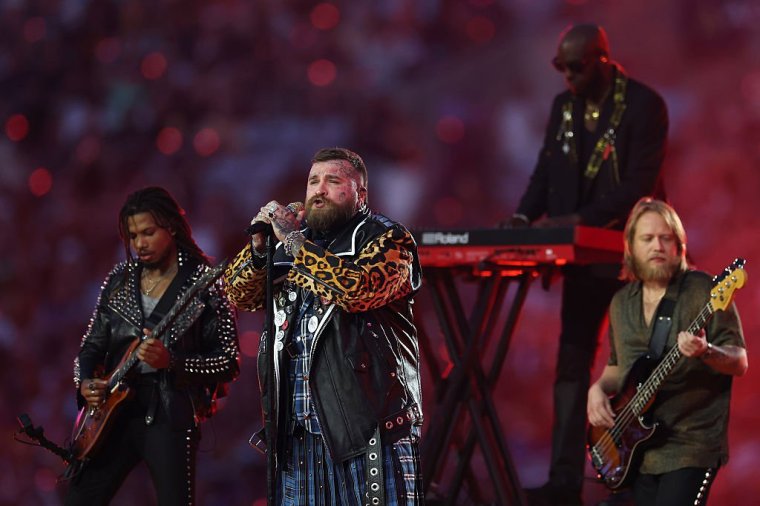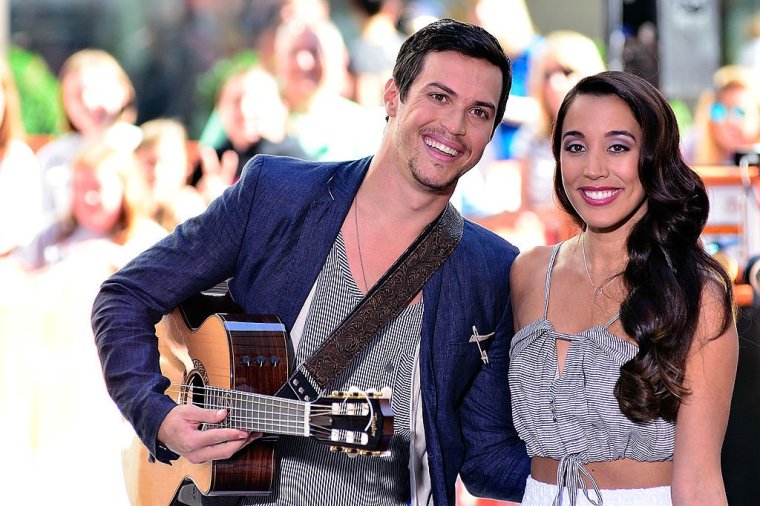Remember “Too Little Too Late” by Jojo? I wrote it – my first global hit – at 17, fresh out of school. I’ve been a songwriter for the two decades since, working with some of the greatest artists and writers and producers of all time, from John Legend to Avicii. I’ve written in thousands of writing rooms and had multiple worldwide hits that have massed more than 12 billion streams – including “Work Bitch” by Britney Spears, “In the Name of Love” by Martin Garrix/Bebe Rexha, and “Slow Hands” with Niall Horan.
One of the main questions I get asked as a songwriter is: “How do you write a hit song?” If there was one magic formula, trust me, we’d all be doing it.
Max Martin (arguably the biggest songwriter in the world with 28 number one singles – second only to Sir Paul McCartney) uses a highly structured, almost mathematical process called “Melodic Math” to create catchy and emotionally resonant pop music. But I’d never recommend approaching songwriting so clinically that you lose the heart of it. There is no “one size fits all” approach you can take in hit songwriting, but there are certain tools and tips that can be applied to help up the odds.
So, if you have aspirations of becoming a songwriter, or want to write that one song that could change everything – here are my top 10 tips for making hits.

Pin down a great title and concept
I always go into sessions with title ideas. This can really help break the ice and kick off inspiration. Often the title crops up the conversations you’re having in the room, too, so listening and being in tune with the room will lead you to the final one. Try using a common phrase, or put a twist on a famous phrase – just like they did with “Cry Me A River” or “Man, I Feel Like A Woman!” or “What Goes Around Comes Around”.
I co-wrote Jojo’s “Too Little Too Late” with Josh Alexander and Billy Steinberg, and that was Josh’s story to his ex. That is the perfect example of a song that uses a common everyday phrase and it went on to be a hit all over the world. Stay away from generic titles like “I Love You” or “You Broke My Heart” because in today’s saturated music market – where over 100,000 songs are released every day – you need it to stand out.
Hooks, hooks, and more hooks
The old saying goes, “Don’t bore us; get to the chorus”. Everything is built around the hook. Finding the hook is imperative, as it’s the catchiest part of a song.
The chorus should always be your main hook in the song, but every section of a song can be “hooky” – the verse, the pre-chorus, the bridge… the more hooks in your song, the better.
Get your title in your main hook. The title is usually the pay off line of the song; it’s what everything is building to story-wise. For example, when we wrote “Where Do Broken Hearts Go” for One Direction, all of the lyrics lead to the big pay off line of the song. The song is building up to a question: “Now I’m searching every lonely place, every corner calling out your name, tryna find you but I just don’t know… where do broken hearts go?”
The chorus should always stand out as its own moment – it should feel like a big arrival or a pay off – so your pre-chorus should never be at the same range melodically as your chorus. In “Too Little Too Late”, the verse starts low melodically, the pre-chorus lifts slightly higher then the verse, and then the chorus is the highest section of the song – it feels like an arrival.

Rhyming and phonetics are everything
Hit songwriting is knowing which sounds to use when, and how to place those sounds throughout the song, so anyone, no matter the language, can still sing along. Rhyming makes everything easier to digest – and it’s the exact rhyming and/or near rhyming of these phonetic lyrics that glue it together.
Many hit songs with big vocal hooks pivot around an “AW”, “OH”, “AH”, or “AY” sound. It’s that nice, big, open vowel sound that really gives chorus melodies a lift. For example, Adele’s “we could’ve had it ALL” (“awwwll”) in “Rolling In The Deep”; or Kelly Clarkson’s “since you been GONE” (“gaawhhn”) in “Since U Been Gone”.
Unique simplicity
When you create a song that is unique and simple, you really have mastered the craft. It is about saying the most you can in the fewest words, and finding fresh ways of saying things that have been said many times before. This balance is often the hardest task, but mixing in colourful imagery, catchphrases and expressions among conversational lyrics helps to keep your lyrics from being too generic.
Write more lyrics than you need – that way, you can improve on your initial lines or replace lines as needed. Whenever I write with Julian Bunetta – who wrote and produced the current longest-running single on the Billboard Hot 100 of all time, “Lose Control” by Teddy Swims – he would always say “let’s write another option for the verse lyrics” and we would pass around the laptop and each write a new line.
Trying to come up with alternate verse lyrics is always a really good exercise in trying to one-up what we have already done.

Trim the fat
This is one of my favourite tips. After the song has been written, take the song back to its rawest form, without any bells and whistles – sing it with just a piano or guitar. This is the best test of a great song, and will help you play the role of editor, unearthing what parts need trimming. Ask yourself questions like “is my intro too long”, “how long is it taking to get to my chorus”, and “is it too wordy and clunky on the ear”.
Craft ’n’ graft
Some of the biggest songs in the world have been written in 20-30 minutes of creative flow. When I co-wrote the Martin Garrix and Bebe Rexha song “In the Name of Love”, it took about 45 minutes. It was like we blinked and it was written. But usually a huge amount of time and effort goes into crafting a song.
Sometimes you have a great chorus, but the verse and pre-chorus just aren’t setting it up right. People can spend weeks, months or even years crafting, grafting, and changing little details. Don’t be one of those people who gives up too easily on a great idea without fully realising its potential.
When I co-wrote One Direction’s “Where Do Broken Hearts Go”, we first recorded a variation of melodies and spent time crafting together the best melodies out of the few lyrics we had at that point. And then one of my co-writers on that song, Julian Bunetta, said the title. We spent hours trying to beat it and debate it, but came back to it. It took us trying different options to really see that it was the best choice.
Make me feel something…
A song should always evoke some kind of emotional or physical reaction. Whether that’s making someone want to cry, dance, smile, laugh, or kiss. Get your listener to feel first and think later. Using a range of emotional, physical, and visual lyrics helps to create those feelings.
Take “Little Do You Know” by Alex & Sierra, which I wrote with Toby Gad, Ali Tamposi and Sierra Deaton. Just under a billion streams later it has become a huge song. I think it’s because of its emotional lyrics: “Little do you know how I’m breaking whilst you fall asleep/ Little do you know I’m still haunted by the memories/ Little do you know I’m tryna pick myself up piece by piece”. That kind of emotion connects with people.
Repetition, repetition, repetition….
The key melodies and key lyrics in your song need to be repeated – you are missing a huge trick if nothing in your song repeats. If there is too much new information, it just won’t land, and the listener will feel overloaded. You have three minutes to make your listener not only connect with your song, but remember it.
How to make your hit song take off
It’s about a perfect storm and the stars aligning. Back in the day, if a record label thought a song was a hit, more often than not that song would be successful. But there were considerably fewer songs being released back then. Currently, there are more than 100,000 songs released every day.
Some things will be left completely up to chance. Avicii’s manager heard my song “All You Need Is Love” when he was walking past my studio door, took the song to Avicii, and that’s how I ended up co-writing and singing on a song with him. You are always just one song away from the song that could change your life, and usually, the songwriters who are the most successful are the ones who just refused to give up.
RuthAnne Cunningham’s book, It’s Not Just a Song, is out now. Her album The Moment is out on 10 October
